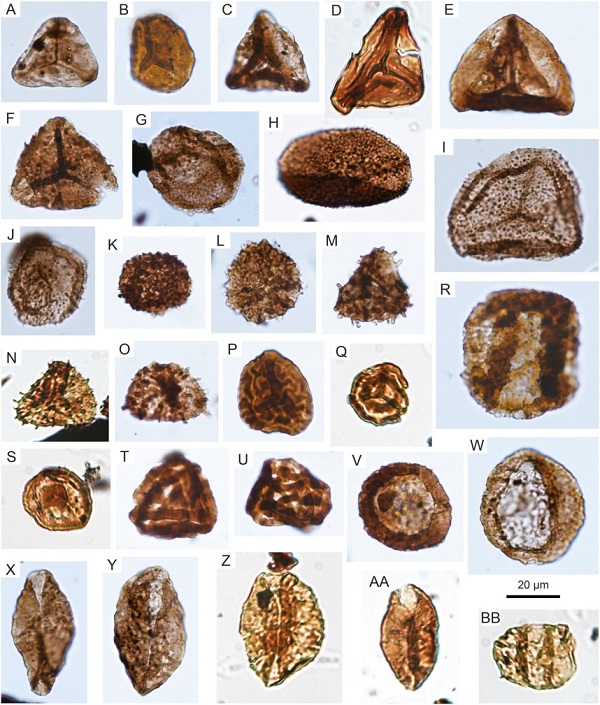
The Triassic-Jurassic (T-J) transition interval (ca. 200 Ma) is featured by a major mass extinction. Major biotic turnover occurred in both marine and terrestrial realms. However, studies on the terrestrial response to this event are still limited, especially in the eastern Tethys region of eastern Asia.
In the northeastern Sichuan Basin of South China, the Upper Triassic and the Lower Jurassic successions are well exposed and continuously developed, yielding diverse fossil plant remains, and providing important material for exploring the continental ecosystem conditions across the T-J transition in the eastern Tethys.
In recent decade, a research team led by Prof. WANG Yongdong from the Nanjing Institute of Geology and Palaeontology of the Chinese Academy of Science (NIGPAS) has conducted a series of investigations in this region.
Recently, Dr. LI Liqin, Prof. WANG Yongdong from NIGPAS and their collaborators reported palaeovegetation and palaeoclimate changes across the Triassic-Jurassic transition in the Sichuan Basin, China. The study was published in Palaeogeography, Palaeoclimatology, Palaeoecology on July 5.
The researchers conducted a detailed palynological study from the Qilixia section in Xuanhan County of the Sichuan Basin, China, spanning the Upper Triassic to the Lower Jurassic.
Through the combination of Principal Components Analysis (PCA) and Sporomorph EcoGroup (SEG) model, they identified five palynological assemblages, revealing significant ecosystem fluctuations across the Triassic-Jurassic transition.
Palynological analysis indicated a lowland fern flora and a warm and humid climate in the Late Triassic (Norian to Rhaetian), which was interrupted by a cooler interval at the Norian-Rhaetian transition, and followed by a mixed mid-storey forest under cooler and drier condition in the latest Rhaetian.
This was followed by fern-dominated lowland vegetation and a warmer and drier climate during the Triassic-Jurassic transition, and a flora with abundant cheirolepid conifers in the Hettangian-Sinemurian.
Most interestingly, the significantly dominant fern vegetation at the Triassic-Jurassic transition interval is similar to the changes reported from geographically widespread sites. The short cooling at the end Triassic and preceding a period of warmer condition at the Early Jurassic, is comparable with records from the western Tethyan realm. It likely reflects (global) vegetation turnover and climatic fluctuations at this time.
This global response in vegetation and climate may suggest that, the Central Atlantic Magmatic Province (CAMP) emplacement, with a significant influx of SO2 and sulphate aerosols into atmosphere, caused an initial cooling at the latest Triassic. It was later outpaced by global warming from elevated CO2 release in the Triassic-Jurassic transition interval.
This study provides important evidence for terrestrial ecosystem response to the Triassic-Jurassic event from the eastern Tethys area.
The research was supported by the National Natural Science Foundation of China, the Strategic Priority Research Program (B) of the Chinese Academy of Sciences, the State Key Laboratory of Palaeobiology and Stratigraphy, and the Swedish Research Council.

Late Triassic spores and pollen representative taxa from Xuanhan of Sichuan Basin (Image by NIGPAS)

86-10-68597521 (day)
86-10-68597289 (night)

52 Sanlihe Rd., Xicheng District,
Beijing, China (100864)

